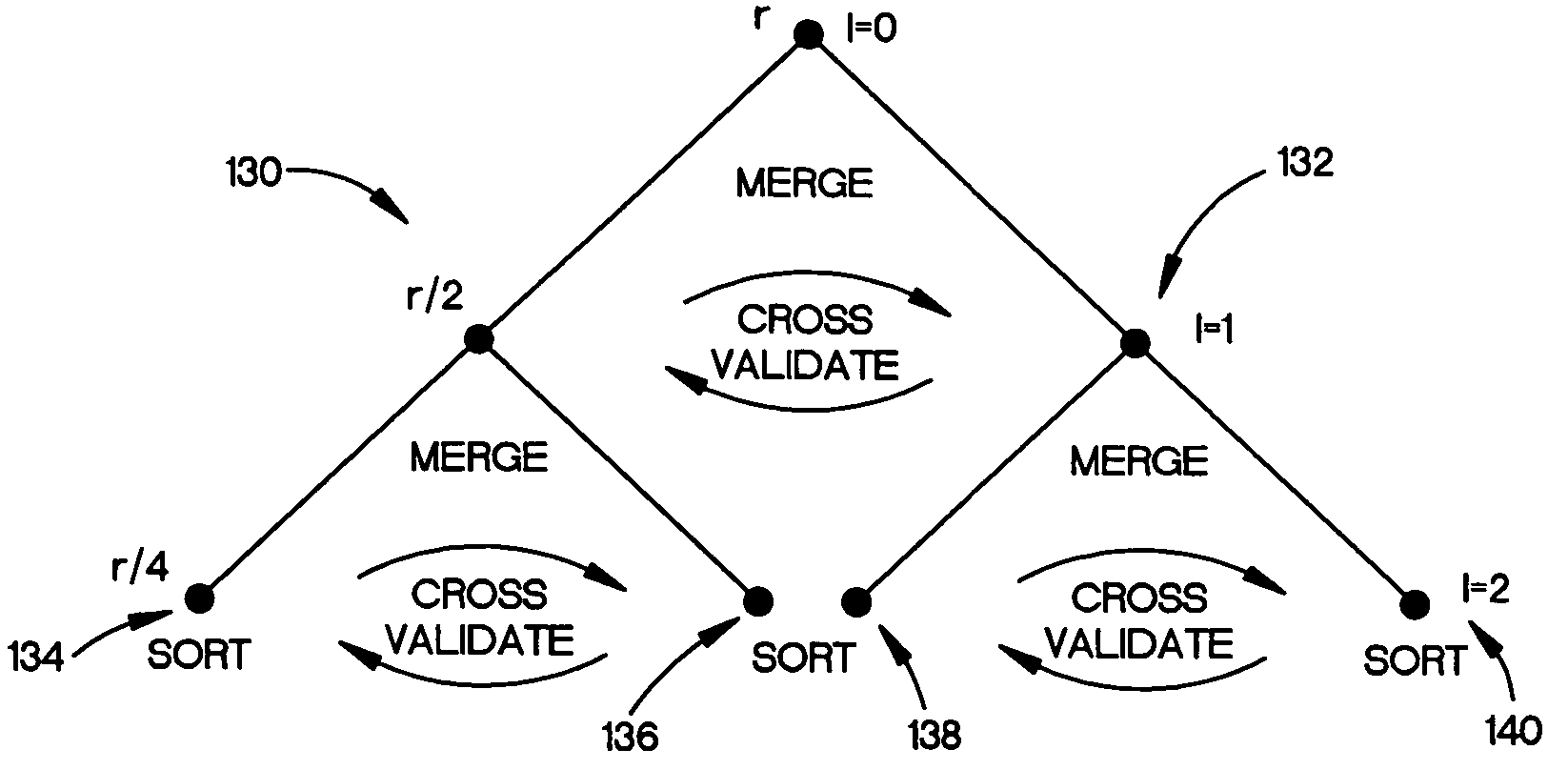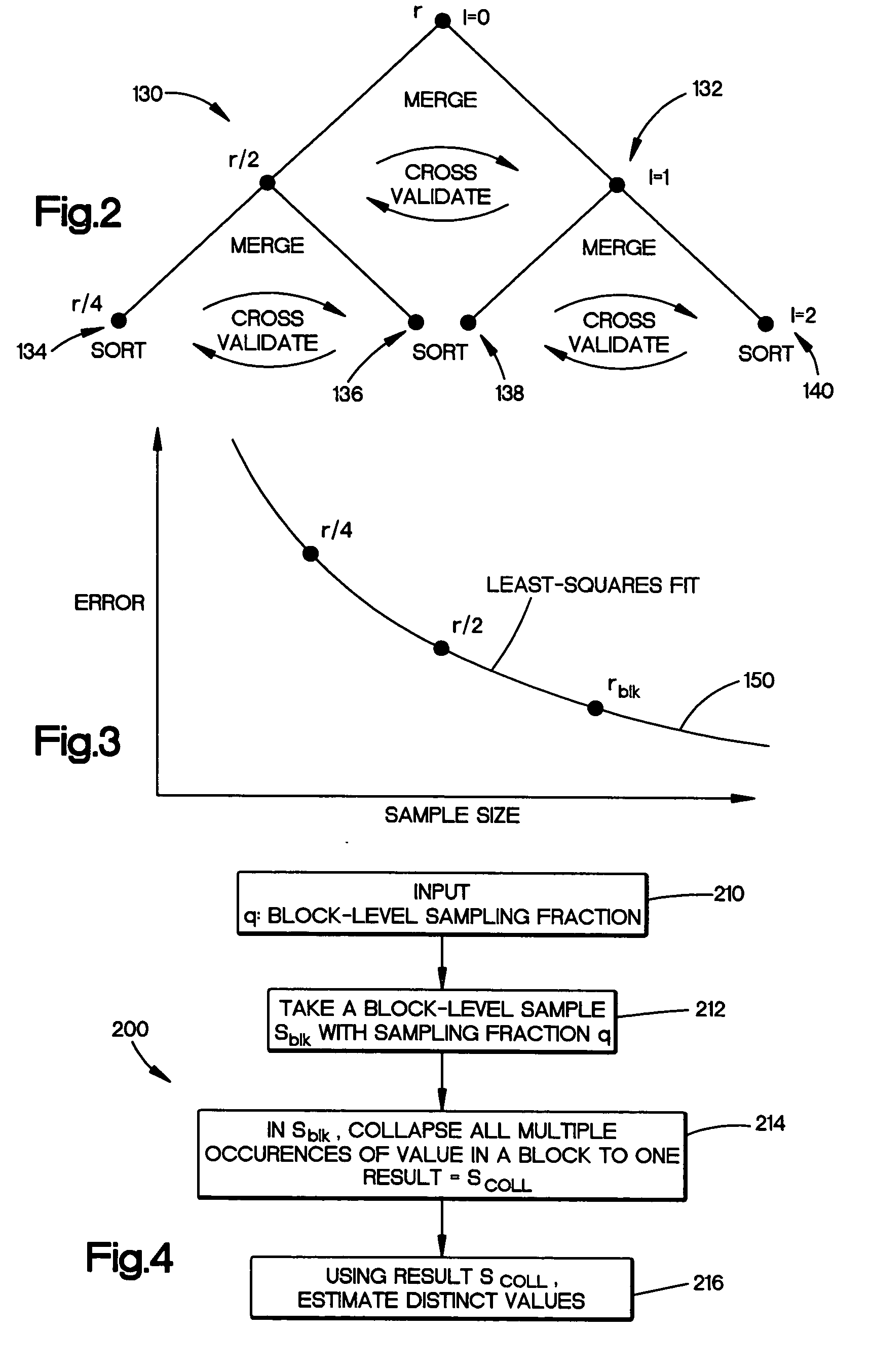Block-level sampling in statistics estimation
- Summary
- Abstract
- Description
- Claims
- Application Information
AI Technical Summary
Benefits of technology
Problems solved by technology
Method used
Image
Examples
Embodiment Construction
[0023] Many query-optimization methods rely on the availability of frequency statistics on database table columns or attributes. In a database table having 10 million records organized into pages, with an 8K byte block or page size, the 10 million records are stored on 100,000 pages or blocks of a storage system. These blocks of records can be accessed by block number using a database management system such as Microsoft SQL Server®.
[0024] Histograms have traditionally been a popular organization scheme for storing these frequency statistics compactly, and yet with reasonable accuracy. Any type of histogram can be viewed as partitioning the attribute domain into disjoint buckets and storing the counts of the number of tuples belonging to each bucket. Scanning the 10 million records of a representative table is not efficient and instead, the exemplary system samples blocks of data in an efficient manner to represent the database in an accurate enough manner to provide good statistics...
PUM
 Login to View More
Login to View More Abstract
Description
Claims
Application Information
 Login to View More
Login to View More - R&D
- Intellectual Property
- Life Sciences
- Materials
- Tech Scout
- Unparalleled Data Quality
- Higher Quality Content
- 60% Fewer Hallucinations
Browse by: Latest US Patents, China's latest patents, Technical Efficacy Thesaurus, Application Domain, Technology Topic, Popular Technical Reports.
© 2025 PatSnap. All rights reserved.Legal|Privacy policy|Modern Slavery Act Transparency Statement|Sitemap|About US| Contact US: help@patsnap.com



